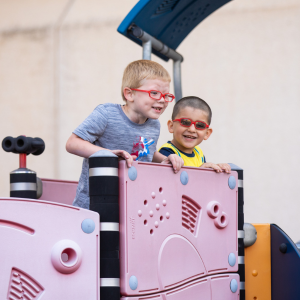Bridging Gaps For People with Low Vision in Mexico
By Holly Herring • Jan 31, 2023
.jpg?lang=en-US&ext=.jpg)
Blog Content
“I learned a lot about resources the staff at the Envision Vision Rehabilitation Center (EVRC) use and everything Envision has available to the community. It was evident how those resources are making a big difference in people’s lives,” said Rangel. “We don’t have anything like that in Mexico or anywhere around here.”
Nearly a year ago, Envision staff members had the opportunity to pick up various supplies from Kansas Vocational Rehab Services that they no longer needed, including more than a dozen white canes. Rangel worked with the EVRC team to bring those white canes to Mexico where she currently resides after finishing her first research study at ERI. She is still a Fellow at ERI while she works at IMO where they see nearly 200 patients a day.
Recently, she delivered the first white cane to an IMO patient named Ezequiel. Ezequiel has been a patient of the IMO for the past year. He has diabetic retinopathy, and a very positive attitude. He was a farmer before he lost his vision and now, he continues to look for ways to stay active. He likes to exercise at home and has developed many skills to remain independent while taking care of himself and his family consisting of his daughter and wife.
After receiving his new white cane, he started using it immediately and was very excited to start receiving training. To him, it is a tool that will help him to get out and spend time with his family.
“It doesn’t seem like it would make a huge difference if you do or do not have a white cane, but it really does,” said Rangel. “For some people to buy a cane, it’s not a big deal. For others, it is a very big deal. Ezequiel was so happy. I can see a huge difference Envision has made on people.” Before his white cane, Ezequiel was using a support cane. He was using the support cane like a white cane to orientate himself and prevent falls. He was okay with it until he touched a white cane for the first time. He noticed it was lighter and more useful to get information to know which way he was going.
Rangel is grateful for her experience at Envision and already has her next research topic identified. Click here to learn more about the Envision Research Institute.
